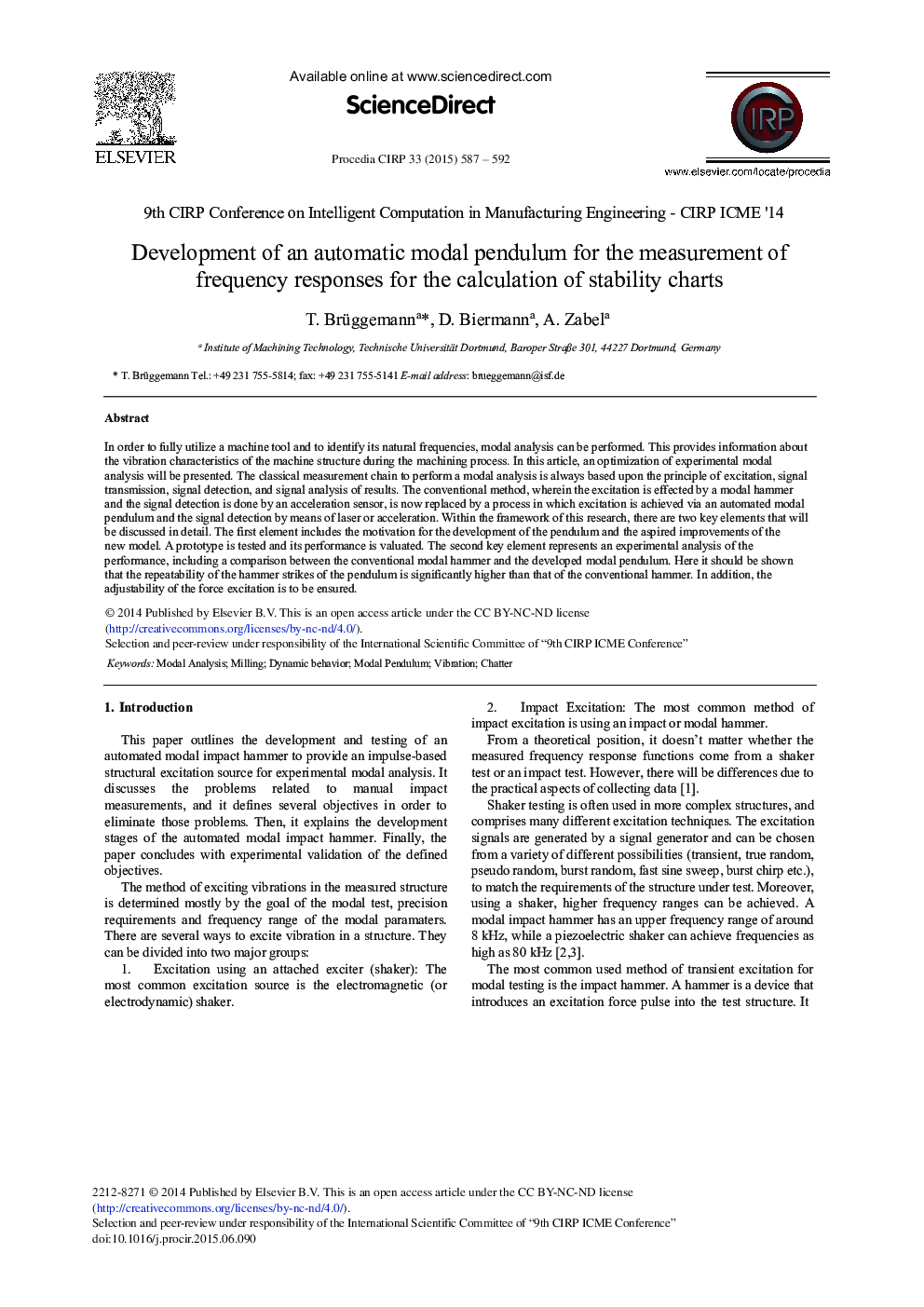| Article ID | Journal | Published Year | Pages | File Type |
|---|---|---|---|---|
| 1699380 | Procedia CIRP | 2015 | 6 Pages |
In order to fully utilize a machine tool and to identify its natural frequencies, modal analysis can be performed. This provides information about the vibration characteristics of the machine structure during the machining process. In this article, an optimization of experimental modal analysis will be presented. The classical measurement chain to perform a modal analysis is always based upon the principle of excitation, signal transmission, signal detection, and signal analysis of results. The conventional method, wherein the excitation is effected by a modal hammer and the signal detection is done by an acceleration sensor, is now replaced by a process in which excitation is achieved via an automated modal pendulum and the signal detection by means of laser or acceleration. Within the framework of this research, there are two key elements that will be discussed in detail. The first element includes the motivation for the development of the pendulum and the aspired improvements of the new model. A prototype is tested and its performance is valuated. The second key element represents an experimental analysis of the performance, including a comparison between the conventional modal hammer and the developed modal pendulum. Here it should be shown that the repeatability of the hammer strikes of the pendulum is significantly higher than that of the conventional hammer. In addition, the adjustability of the force excitation is to be ensured.
